Variants VS, VSOP, XO Alcohol by volume 40% | Country of origin France Related products | |
Flavour Varies, though typically with characteristics combining nuts, fruit, caramel, honey, vanilla, and/or other spices | ||
Hennessy v s cognac
Cognac (/ˈkɒnjæk/ KON-yak or /ˈkoʊnjæk/ KOHN-yak ; [kɔ.ɲak]), named after the town of Cognac, France, is a variety of brandy. It is produced in the wine-growing region surrounding the town from which it takes its name, in the French Departements of Charente and Charente-Maritime.
Contents
- Hennessy v s cognac
- How to properly drink cognac
- Producing region and legal definitions
- Production process
- Grapes
- Fermentation and distillation
- Aging
- Blending
- Grades
- Companies and brands
- Cognac based drinks
- References
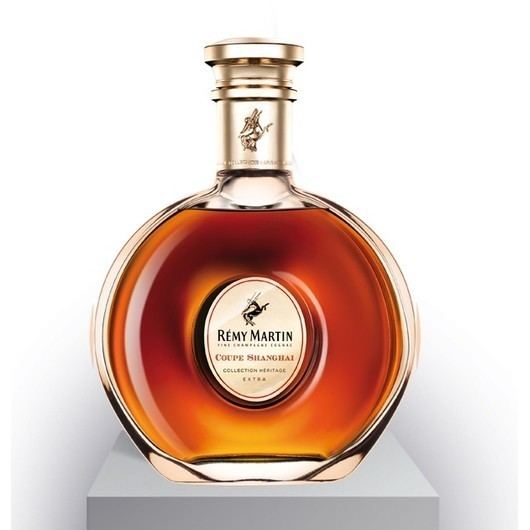
For a brandy to bear the name Cognac, an Appellation d'origine contrôlée, its production methods must meet certain legal requirements. In particular, it must be made from specified grapes (see below), of which Ugni blanc, known locally as Saint-Emilion, is the one most widely used. The brandy must be twice distilled in copper pot stills and aged at least two years in French oak barrels from Limousin or Tronçais. Cognac matures in the same way as whiskies and wine when aged in barrels, and most cognacs are aged considerably longer than the minimum legal requirement.
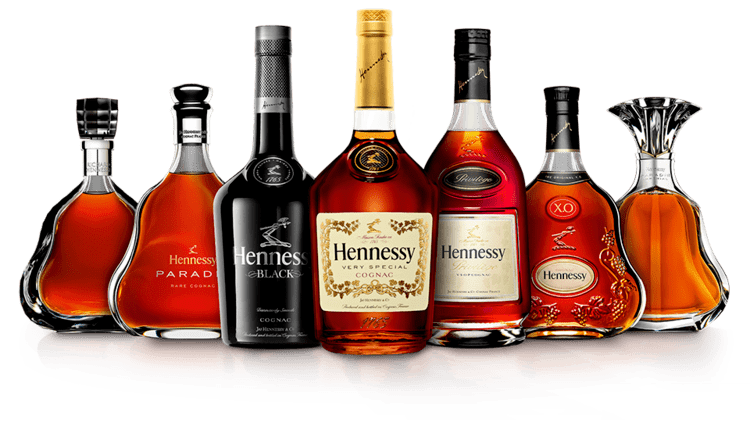
How to properly drink cognac
Producing region and legal definitions
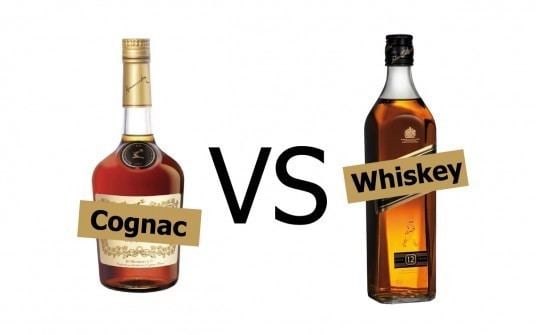
The region authorised to produce cognac is divided into six zones, including five crus broadly covering the department of Charente-Maritime, a large part of the department of Charente and a few areas in Deux-Sèvres and the Dordogne. The six zones are: Grande Champagne, Petite Champagne, Borderies, Fins Bois, Bon Bois and finally Bois Ordinaire. A blend of Grande and Petite Champagne Cognacs, with at least half coming from Grande Champagne, is known as Fine Champagne.
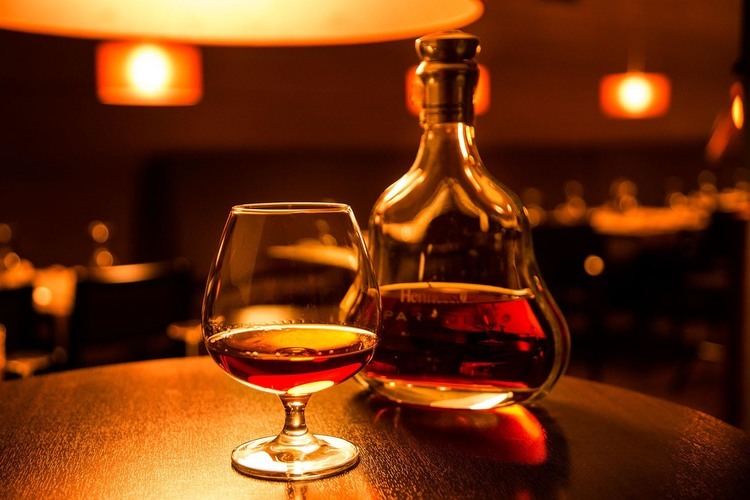
Cognac-producing regions should not be confused with the northeastern region of Champagne, a wine region that produces sparkling wine by that name, although they do share a common etymology – both being derivations of a French term for chalky soil.
Production process
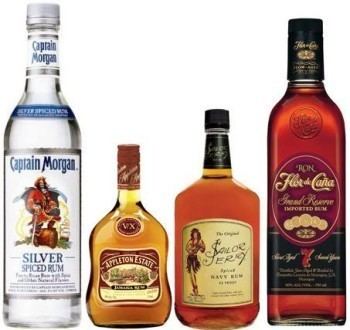
Cognac is a type of brandy and, after the distillation and during the aging process, is also called eau de vie. It is produced by doubly distilling white wines produced in any of the designated growing regions.
Grapes
The white wine used in making cognac is very dry, acidic and thin. Though it has been characterized as "virtually undrinkable", it is excellent for distillation and aging. It may be made only from a strict list of grape varieties. In order for it to be considered a true cru, the wine must be at least 90% Ugni blanc (known in Italy as Trebbiano), Folle blanche and Colombard, while up to 10% of the grapes used can be Folignan, Jurançon blanc, Meslier St-François (also called Blanc Ramé), Sélect, Montils or Sémillon. Cognacs which are not to carry the name of a cru are freer in the allowed grape varieties, needing at least 90% Colombard, Folle blanche, Jurançon blanc, Meslier Saint-François, Montils, Sémillon, or Ugni blanc, and up to 10% Folignan or Sélect.
Fermentation and distillation
After the grapes are pressed, the juice is left to ferment for two or three weeks, with the region's native, wild yeasts converting the sugar into alcohol; neither sugar nor sulfur may be added. At this point, the resulting wine is about 7% to 8% alcohol.
Distillation takes place in traditionally shaped Charentais copper stills, also known as an alembic, the design and dimensions of which are also legally controlled. Two distillations must be carried out; the resulting eau-de-vie is a colourless spirit of about 70% alcohol.
Aging
Once distillation is complete, it must be aged in Limousin oak casks for at least two years before it can be sold to the public. It is typically put into casks at an alcohol by volume strength of about 70%. As the cognac interacts with the oak barrel and the air, it evaporates at the rate of about three percent each year, slowly losing both alcohol and water. Because the alcohol dissipates faster than the water, the alcohol concentration drops to about 40% over time. The cognac is then transferred to large glass carboys called bonbonnes, then stored for future blending. Since oak barrels stop contributing to flavor after four or five decades, longer aging periods may not be beneficial.
Blending
The age of the cognac is calculated as that of the youngest component used in the blend. The blend is usually of different ages and (in the case of the larger and more commercial producers) from different local areas. This blending, or marriage, of different eaux-de-vie is important to obtain a complexity of flavours absent from an eau-de-vie from a single distillery or vineyard. Each cognac house has a master taster (maître de chai), who is responsible for blending the spirits, so that cognac produced by a company will have a consistent house style and quality. In this respect it is similar to the process of blending whisky or non-vintage Champagne to achieve a consistent brand flavor. A very small number of producers, such as Guillon Painturaud and Moyet, do not blend their final product from different ages of eaux-de-vie and therefore produce a "purer" flavour (a practice roughly equivalent to the production of single malt Scotch whisky). Hundreds of vineyards in the Cognac AOC region sell their own cognac. These are likewise blended from the eaux-de-vie of different years, but they are single-vineyard cognacs, varying slightly from year to year and according to the taste of the producer, hence lacking some of the predictability of the better-known commercial products. Depending on their success in marketing, small producers may sell a larger or smaller proportion of their product to individual buyers, wine dealers, bars and restaurants, the remainder being acquired by larger cognac houses for blending. The success of artisanal cognacs has encouraged some larger industrial-scale producers to produce single-vineyard cognacs.
Grades
According to the Bureau National Interprofessionnel du Cognac (BINC), the official quality grades of cognac are the following:
The names of the grades are in English because the historical cognac trade, particularly in the 18th century, significantly involved the British.
The tightly defined crus, or geographic denominations where the grapes are grown, with their distinctive soils and microclimates (perhaps atypical of the larger region), can also be used to classify the cognac, as these factors can produce eaux de vie with characteristics particular to their specific location.
The soils of Les Bois (Bons Bois, Bois Ordinaires, and Bois à terroirs) are sandy, spanning coastal areas and some valleys.
Companies and brands
While there are close to 200 cognac producers, a large percentage of cognac—more than 90% for the US market, according to one 2008 estimate—comes from only four producers: Courvoisier (owned by Beam Suntory), Hennessy (owned by LVMH), Martell (owned by Pernod Ricard), and Rémy Martin (owned by Rémy Cointreau). Other brands meeting the AOC criteria for cognac include: Bache-Gabrielsen/Dupuy, Braastad, Camus, La Fontaine de La Pouyade, Château Fontpinot, Delamain, Pierre Ferrand, Frapin, Gautier, Hine, Marcel Ragnaud, Moyet, Otard, Meukow, and Cognac Croizet.
